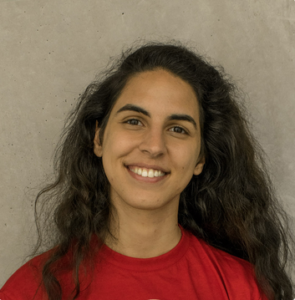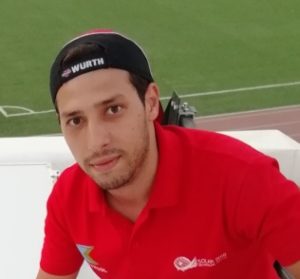Team members explain how the net-zero-energy prototype for a solar-powered home copes with region’s high-ambient conditions
Dubai, UAE, 25 October 2018: Is a net-zero-energy home in the Middle East truly feasible, given the region’s high ambient conditions? Team BaityKool says, “Yes”. Students from Bordeaux University, Arts et Métiers School (ENSAM), Architecture and Landscape school of Bordeaux (ENSAPBx), in France; An-Najah National University, in Palestine and Amity University, in Dubai, teamed up to work on the Baitykool Project, as an entry for the Solar Decathlon Middle East, to be held from November 14 to 29, 2018, in Dubai.

Kenza Chraibi, Architect, Team Leader,
Kenza Chraibi, Architect, Team Leader, said that the main objective behind the design of Baitykool is to develop a net-zero-energy house that can withstand the ambient conditions of the Middle East. “We had in mind the Middle East way of life,” she said, “with reference to old and traditional architecture and taking into account the need for air conditioning with the heat.”
Chraibi said that the prototype will be powered entirely by solar panels and will “produce the energy it consumes”. As such, she said, they were aware they had to implement all measures to ensure the indoor air comfort of potential inhabitants, without having the HVAC system’s heavy consumption impact the project’s net-zero-energy goal.

Zakaria Aketouane, Energy Engineer, Team Baitykool,
Zakaria Aketouane, Energy Engineer, Team Baitykool, provided a summary of the prototype’s HVAC design. The main system, he said, is an AHU unit with a double-flow ventilation (DFV), provided by Swegon. “We diffuse air through the ducts to the living room and to the two bedrooms of the prototype,” he said. “We have one main system that will cool down the prototype. For the kitchen, we have an innovative solution, called Radiative Sky Cooling panels (RSC), developed and donated by the research center Nobatek/INEF4. The installation of this system was done in the presence of Paul Bonnamy, Research Engineer of Nobatek/INEF4.”
“In principle,” Aketouane said, “we exchange heat by long-wave radiation with the sky. The sky is usually below the ambient temperature, by 15-20 degrees C. During the night, when there is no sun, the panels on the roof will exchange heat with the sky and will cool down water. This water will be stored in the tank; it’s similar to solar thermal panels, but they work during the night, so they will allow us to pull down the water [temperature] by five degrees C below the ambient temperature when the sky is clear. If the temperature is 30 degrees C, our panels can cool down this water by five degrees below the ambient temperature and it will be 25 degrees C. This cold water will be stored in the tank, and during the day when we need cooling, we will use this water, which will be circulated into radiative panels that are in the kitchen, to cool down the kitchen.”
Aketouane said that 90% of the air is recycled, except in the kitchen and in the bathroom. “The air inside the two parts of the prototype will be rejected,” he explained. “Because this rejected air is cold, we will use it to cool down the air we inject into the prototype. The double-flow ventilation will allow us to recover this cold, thus reducing the energy consumption of our cooling system.”
To optimise energy consumption, Aketouane said that insulation played an important role, as did the integration of clay bricks. “This helps regulate the temperature,” he said. “It works like storage; it allows us to reduce the fluctuation of temperature inside the building by storing the cold inside the earth clay in the interior of the façade.”
Hannah Jo Uy is Assistant Editor at Climate Control Middle East magazine. She may be contacted at hannah@cpi-industry.com
Copyright © 2006-2025 - CPI Industry. All rights reserved.